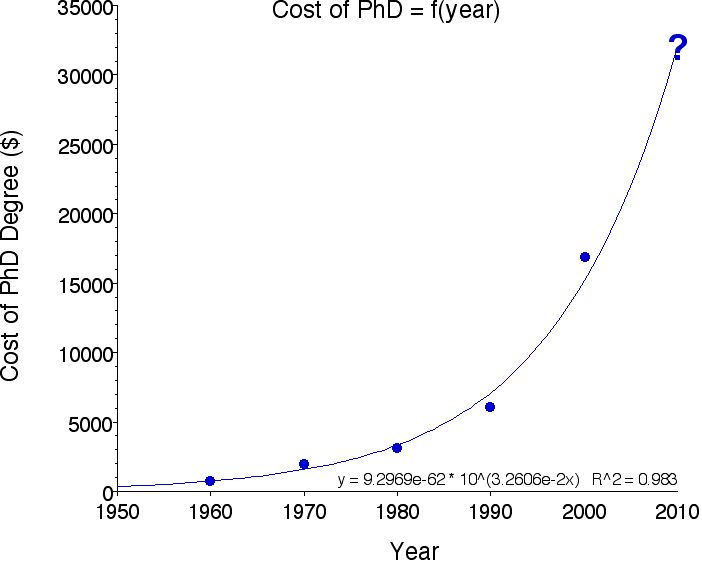| While we are looking at the past to predict the future perhaps we should give some consideration to what might happen to graduate tuition. I'm sure most of you know, especially if you are a student, that tuition has increased precipitously in recent years. |

| What I have done
in this chart is estimate the typical cost of earning a PhD degree based on
the tuition levels in effect at the decade markers. This is based only on
fees paid to the University and excludes living and thesis-related
expenses. I assumed 3 years of full fees and 2 years of thesis only fees
(OK, that's a tad optimistic, but this is for illustrative purposes). Note
that a graph with precisely the same shape, but smaller values, would
result from the estimation of the cost of a Master's degree.
I was astonished to discover that over the 40 year history of FGS (from 1960 until last year) graduate tuition as estimated here has more than doubled every 10 years. Addendum: This chart is based on fees published in the Graduate Calendars. As such, inflation is very much a part of this picture. One reader suggested it would be interesting to use constant dollars to remove the effect of inflation, thus allowing us to determine whether tuition has increased at the same rate as consumer prices generally. If it did, then tuition would remain unchanged when measured in "constant dollars." Over the 40 year period from 1960 until 2000, measured in constant dollars, the cost of a PhD degree has increased between two and three fold. |